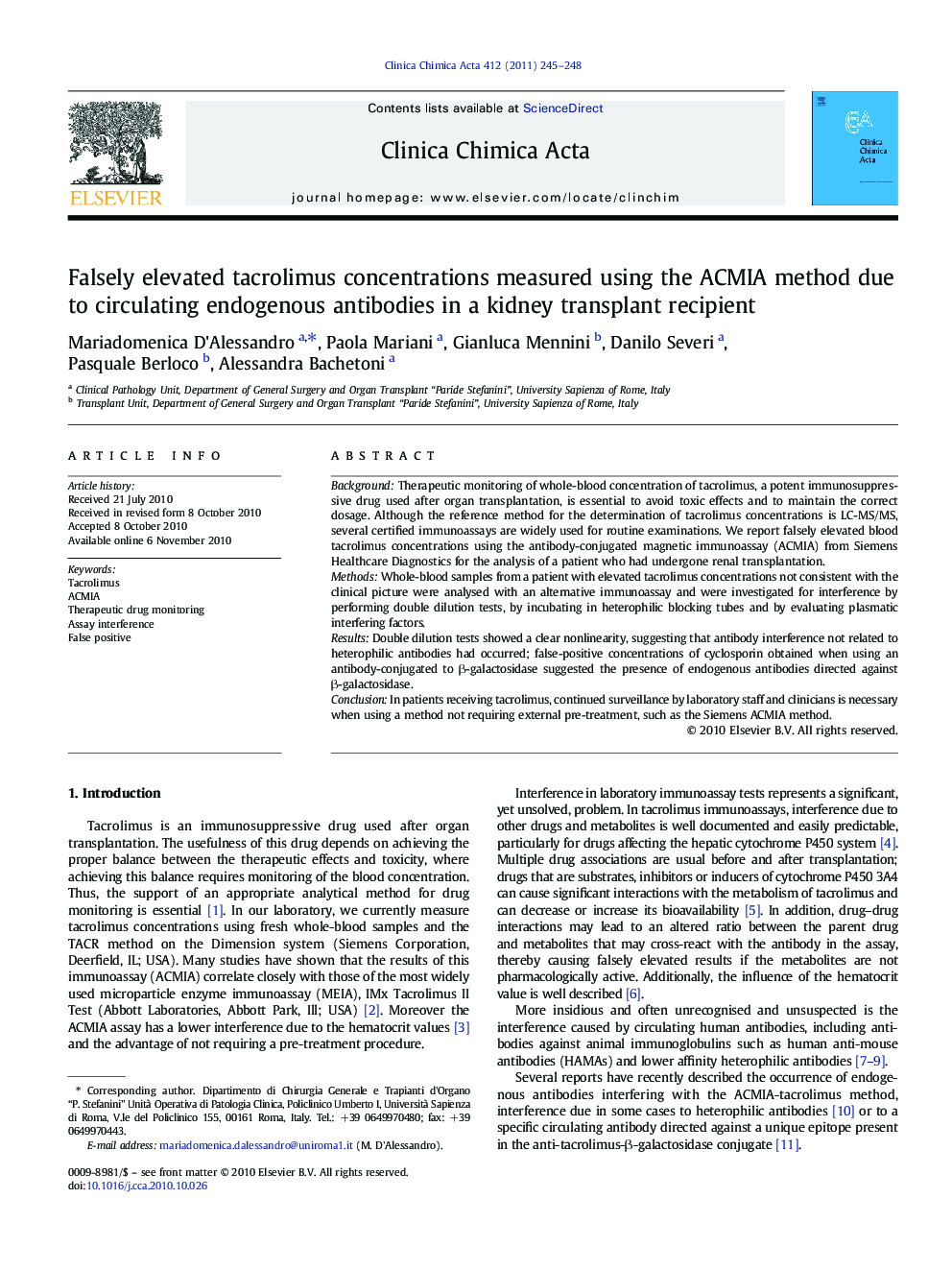| Article ID | Journal | Published Year | Pages | File Type |
|---|---|---|---|---|
| 1966522 | Clinica Chimica Acta | 2011 | 4 Pages |
BackgroundTherapeutic monitoring of whole-blood concentration of tacrolimus, a potent immunosuppressive drug used after organ transplantation, is essential to avoid toxic effects and to maintain the correct dosage. Although the reference method for the determination of tacrolimus concentrations is LC-MS/MS, several certified immunoassays are widely used for routine examinations. We report falsely elevated blood tacrolimus concentrations using the antibody-conjugated magnetic immunoassay (ACMIA) from Siemens Healthcare Diagnostics for the analysis of a patient who had undergone renal transplantation.MethodsWhole-blood samples from a patient with elevated tacrolimus concentrations not consistent with the clinical picture were analysed with an alternative immunoassay and were investigated for interference by performing double dilution tests, by incubating in heterophilic blocking tubes and by evaluating plasmatic interfering factors.ResultsDouble dilution tests showed a clear nonlinearity, suggesting that antibody interference not related to heterophilic antibodies had occurred; false-positive concentrations of cyclosporin obtained when using an antibody-conjugated to β-galactosidase suggested the presence of endogenous antibodies directed against β-galactosidase.ConclusionIn patients receiving tacrolimus, continued surveillance by laboratory staff and clinicians is necessary when using a method not requiring external pre-treatment, such as the Siemens ACMIA method.
